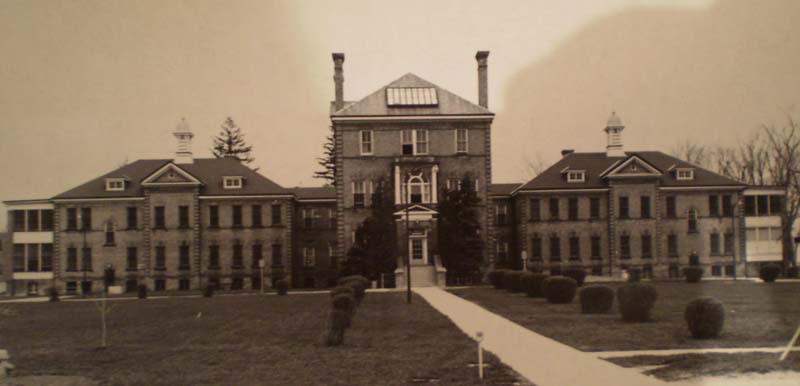The Medical Examination Building

Medical Examination
Building, circa 1900. Opened in 1903, this building featured large operating rooms. It later became
the Reception Hospital and provided a home for new patients. RMHCL
1 |
2
Introduction | The Main Building |
The Cottages
The Medical Examination Building |
The North Building
In 1903 the Medical Examination building was opened on asylum grounds. The hospital had been using the old amusement hall in the main building as an infirmary, but it quickly became apparent that a larger space was needed, as this room only accommodated 40 patients. It was also located up 3 flights of stairs, which was inconvenient for the more elderly patients. Like the main asylum building, the new building offered both dormitories and individual rooms for patients as well as dining rooms and sunrooms where patients could relax and socialize. The building's central block was used as a nurses' home, a great improvement over their previous rooms in the patients' wards.
Dr. R. Maurice Bucke wanted to ensure that the LAI had the most technologically advanced medical building, and, after touring similar medical buildings in the United States, helped design the building plan. Its upper floors featured operating rooms, which were aided by large skylights in both wings, and could be reached by elevator. The Asylum also offered patients on-site specialists, such as optometrists, dentists and internal specialists, and their offices would have likely been in the medical exam building. Dr. Bucke had asked for this type of hospital on the asylum grounds since the 1880s, when doctors began to prefer to isolate different patients to offer more specialized health care.
In 1908 it was decided that the building would better serve the asylum as a reception hospital. This hospital had two functions. It served as the initial housing for new patients, where doctors could assess a patient's health without introducing them to the main wards. It also served as a hospital for acute patients. These short-term patients might stay for a few months to a few years, and enjoyed the latest technologically advanced cures, such as showers, massages and continuous baths. Superintendents were quick to argue that this hospital was similar to any general hospital, where a patient's health was assessed and improved as much as possible, and was much different from the chronic wards found in the main building.